Posted:
12/1/2017
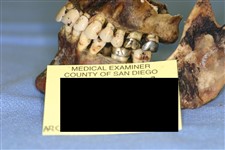
fig. 2

fig. 5
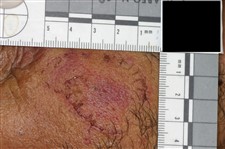
fig. 8

fig.3
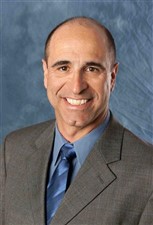
Dr. Anthony "Rick" Cardoza
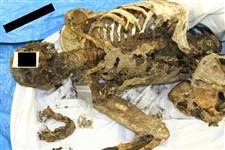
fig. 1
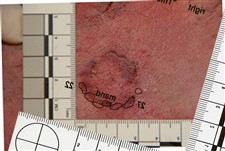
fig. 6

fig. 4
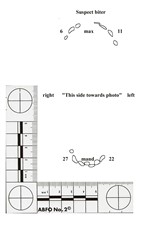
fig. 7
The field of forensic odontology is that area of dentistry concerned with the application of law in both criminal and civil proceedings. There are two primary disciplines within forensic odontology, postmortem identification and bite mark (pattern injury) analysis. Forensic odontologists also assist authorities with multiple fatality incidents, age determination based on tooth development, recognition of child abuse/intimate partner violence (IPV) and participate in civil proceedings as an expert witness.
Dental Identification
As forensic dental identification specialists, we are typically the last conventional option for postmortem identification. DNA is also now utilized but due to its high cost and the extensive time required for analysis, it is used sparingly or when absolutely no other option exists. Other forms of postmortem identification include visual, personal effects, fingerprints, scars, marks, tattoos, and medical radiographs. Forensic dental identification has been successful because of the nature of the human dentition. The enamel is the hardest substance in the body and the only exposed portion of the skeletal system (fig. 1, 2).
Teeth are very resistant to thermal damage, blunt force trauma, and the dentition remains stable during tissue decomposition. In addition, the dentition is unique to a specific individual. This feature includes not only the morphology of the coronal portion of the tooth but the morphology of the roots, pulpal chamber, and their relationship to their surrounding structures (i.e. sinus proximity, mandibular canal proximity, interproximal bony trabecular patterns etc.). Following the natural dentition, if you add man-made dental restorations, the unique combination for any given individual can factor into the millions.
There are numerous important reasons for identifying the deceased. A legal certification of death is necessary to consummate legal matters such as life insurance, wills, etc. There are family and personal reasons as well (closure). In criminal investigations, it is important to establish the identity of the victim in order to proceed with the criminal investigation and to identify the suspect. In a fire for instance, the bodies are often burned beyond visual recognition (fig. 3).
Personal effects are also destroyed or lost in the fire. Even if the personal effects are recovered they may not be considered reliable due to the typical calamity which surrounds a fire. A forensic anthropologist will examine the remains of the skeletal system and can then determine age, race and sex of the victim. Positive identification is best performed by examination of the surviving dentition by the forensic odontologist. In a fire where the temperatures may be very high (1000°C) even the dental remains may be destroyed. Crowns may fracture or explode leaving only the roots. The bone may also be completely consumed leaving only scattered roots with no bony sockets for reference.
Forensic dental identification is most often accomplished by the comparison of the radiographs of the teeth of the decedent (postmortem) (fig. 4) with the dental radiographs obtained from the dentist of the suspected victim (antemortem) (fig. 5).
Ideally the antemortem radiographs furnished should be the original full mouth series. Often this is not the case. Children’s radiographs are typically bitewings only unless they have orthodontic records as well. Often times, duplicate radiographs, not the originals, are sent and have been either poorly duplicated and/or are not labeled right and left for orientation. In addition, the antemortem radiographic image may be of poor quality due to improper operator technique (cone cuts, overlapping interproximals, elongation/foreshortening, etc.) or poor processing (contrast, burned images, etc.). When poor antemortem radiographs are compared to an ideal postmortem radiograph, the two may not appear consistent. This inconsistency could seriously hamper the identification effort.
In forensic dental identification, we stress that good quality, properly mounted and labeled original antemortem radiographs be sent for comparison. In addition, copies of the victim’s dental treatment progress notes should be submitted as well. This allows the forensic dentist to verify dental treatment that was performed subsequent to the date of the radiographs. It is important as practicing dentists to keep complete patient records on file and continually update them, including the radiographs. One of your records may be needed for the purpose of a postmortem dental identification.
Bite Mark Analysis
The study of bite marks involves the analysis of teeth contacting another object or medium. Thus, bite mark analysis is a type of forensic pattern analysis similar to tool mark analysis. Unlike dental identification which is a quantitative analysis, bite mark analysis relies on the odontologist’s interpretation of the pattern; therefore, bite mark analysis is primarily subjective in nature. It is for this reason that bite mark opinions, though based on scientific methods and principles, can be highly variable based on the individual’s interpretation of the pattern injury resulting in experts often giving different levels of opinion on the same pattern injury. The consequence we see today is that bite mark analysis has become highly controversial. And, in the United States, there have been twenty-eight exonerations of individuals after they had been previously charged or convicted where the charges/convictions were based partially on faulty bite mark evidence.
The study of bite mark analysis involves the comparison of the pattern injury or bite mark to the suspect biter's dentition. The classic appearance of a bite mark is two semicircular or ovoid arches that oppose each other with a central ecchymosis (fig. 6).
The bite mark pattern is photographed from multiple angles with a scale present for reference. In addition, the bite mark is swabbed for possible suspect DNA. On the biter, it is necessary to take full arch dental impressions of both the maxillary and mandibular arches. In addition, it is necessary to have complete dental charting of all the present, missing, and restored teeth including charting anomalies such as fractures, spaces, rotations, etc., wax bites, and intraoral photography. If the accused suspect biter is in jail, then collection of these records will require a court order and the individual has the right to have his attorney present (note: the biter could also be the victim who bit their attacker in self-defense).
Once all the records are collected on the bite mark and the suspect biter then the odontologist can complete his analysis. The analysis consists of a comparison of the bite mark photo, which has been digitally resized to life-size 1:1 proportions to an overlay of the incisal/occlusal edges of the suspect biter's teeth. This comparison is accomplished by creating a digital hollow volume overlay of the dental models by scanning the models, using a flatbed scanner, into the computer (fig 7).Then, with the use of photographic software, the incisal edge overlay can be inverted and superimposed onto the bite mark pattern photo for comparison and analysis (fig 8).
Finally, the odontologist will submit his report to the entity that retained him. In this report, the odontologist will list all the steps taken to complete the analysis and formulate an opinion. The range of opinions include: can include biter in pool of suspect biters, cannot include biter in pool of suspect biters, exclusion (did not make the bite), and inconclusive (not enough data or poor quality data to formulate an opinion).
In summary, forensic odontology is an exciting field where dental professionals can utilize their skills and training in a field completely outside of dentistry. Choosing a career path as a forensic odontologist or forensic dental autopsy technician (the auxiliary’s role in forensic dentistry) should not be viewed as a hobby but, in fact, a second career in addition to a primary career in the field of dentistry. The hours can be long and the monetary return low, or even non-existent, but the personal reward and satisfaction can be great.
Dr. Anthony “Rick” Cardoza is a forensic dental consultant for the County of San Diego Office of the Medical Examiner, County of Imperial Office of the Coroner, State of California Department of Justice and is the Director of the California Dental Identification Team (CalDIT). Dr. Cardoza is a Fellow of the American Academy of Forensic Sciences and is a Diplomate of the American Board of Forensic Odontology. Dr. Cardoza graduated from Northwestern Dental School in 1985 and maintains a general dental practice in San Diego, California.
He will speak at the 106th Hinman Dental Meeting, March 22-24, 2018 and his courses can be found here.



